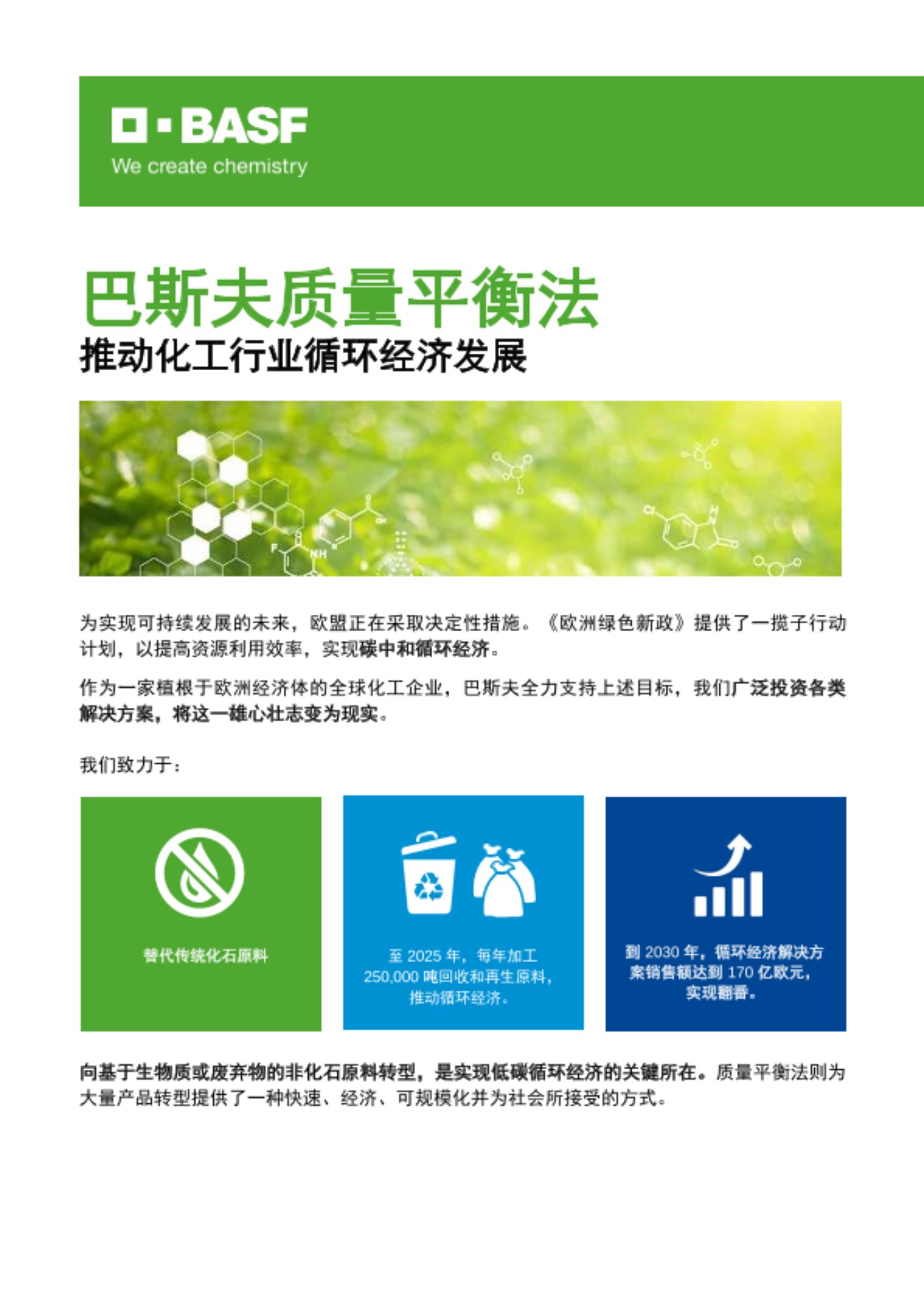可持续发展
质量平衡法
化工行业使用少量的原材料制成千上万种不同的产品。大部分化工生产都是从蒸汽裂解装置开始的。该装置可以利用蒸汽将石脑油(一种长链碳氢化合物)裂解成更小的分子。这些分子包括氢、甲烷、乙烯和丙烯,它们成为下游生产的基础材料,主要被制成塑料、涂料、溶剂和作物保护产品。
视频:巴斯夫质量平衡法
因此,这一原则类似于消费者购买“绿色”或“清洁”电力。尽管消费者无法确定他们在家中使用的电力是否直接来自可再生能源,但绿色能源在电网中的总份额随着需求的增加而上升。在化工行业,我们在化工生产的初始环节添加可再生或再循环原料,并将其分配给最终产品。这种基于计算的原则具有多种优势:它减少了温室气体排放和化石原料投入,产品质量和性能则保持不变。因此,产品可以像传统生产材料一样进行加工,无需调整配方、设施或工艺。购买生物质平衡产品的客户可以像使用传统产品一样使用它们,同时享有同等的产品品质。
独立机构负责审核分配方法(例如,如何将可持续原材料通过算法分配给最终产品)。然而,目前专家们仍在使用不同的方法(或标准)进行审核和认证。
我们在不同的利益相关者平台上进行合作:
- 协会,例如欧洲化学工业委员会(CEFIC)和欧洲塑料制造商协会(PlasticsEurope)生物质平衡联合工作组
- 认证体系:国际可持续碳认证计划(ISCC)、REDcert和可持续生物材料圆桌会议(RSB)等领先认证机构的积极参与者/成员
- 不同的公私合营(PPP)项目成员,如欧盟委员会发起的循环塑料联盟、荷兰政府发起的绿色协议
- 规范组织:不同工作组的成员,如ISO PC 308(监管链)、ISO TC 323(循环经济)、ISO TC 207(环境管理)、ISO TC 61(塑料方面)等

